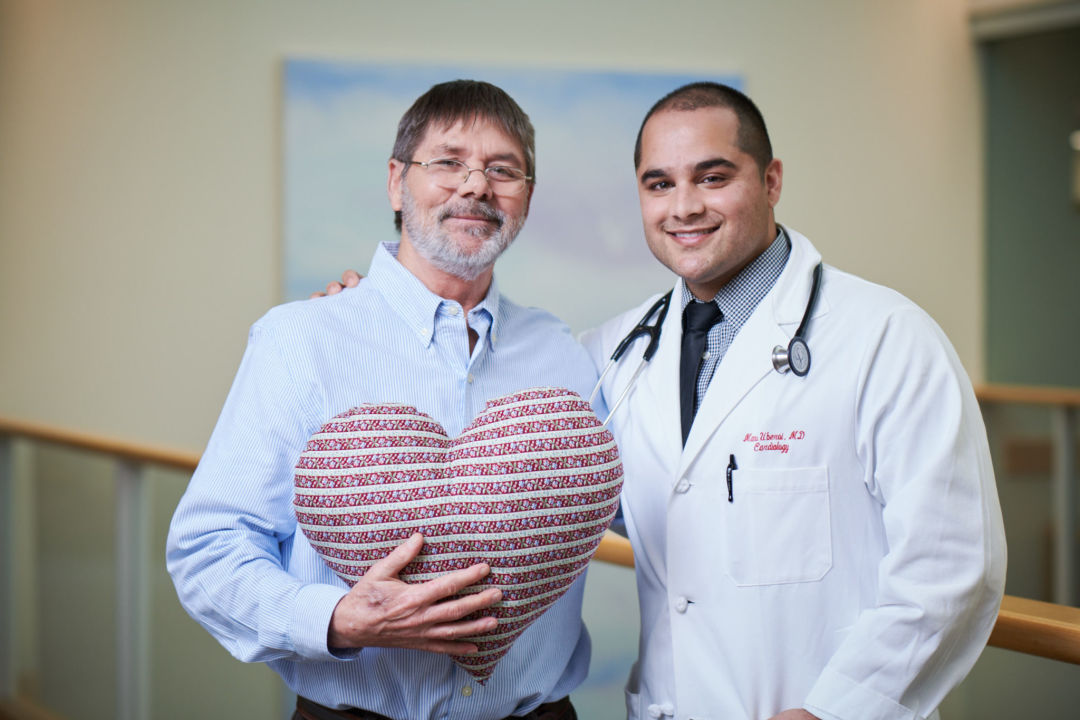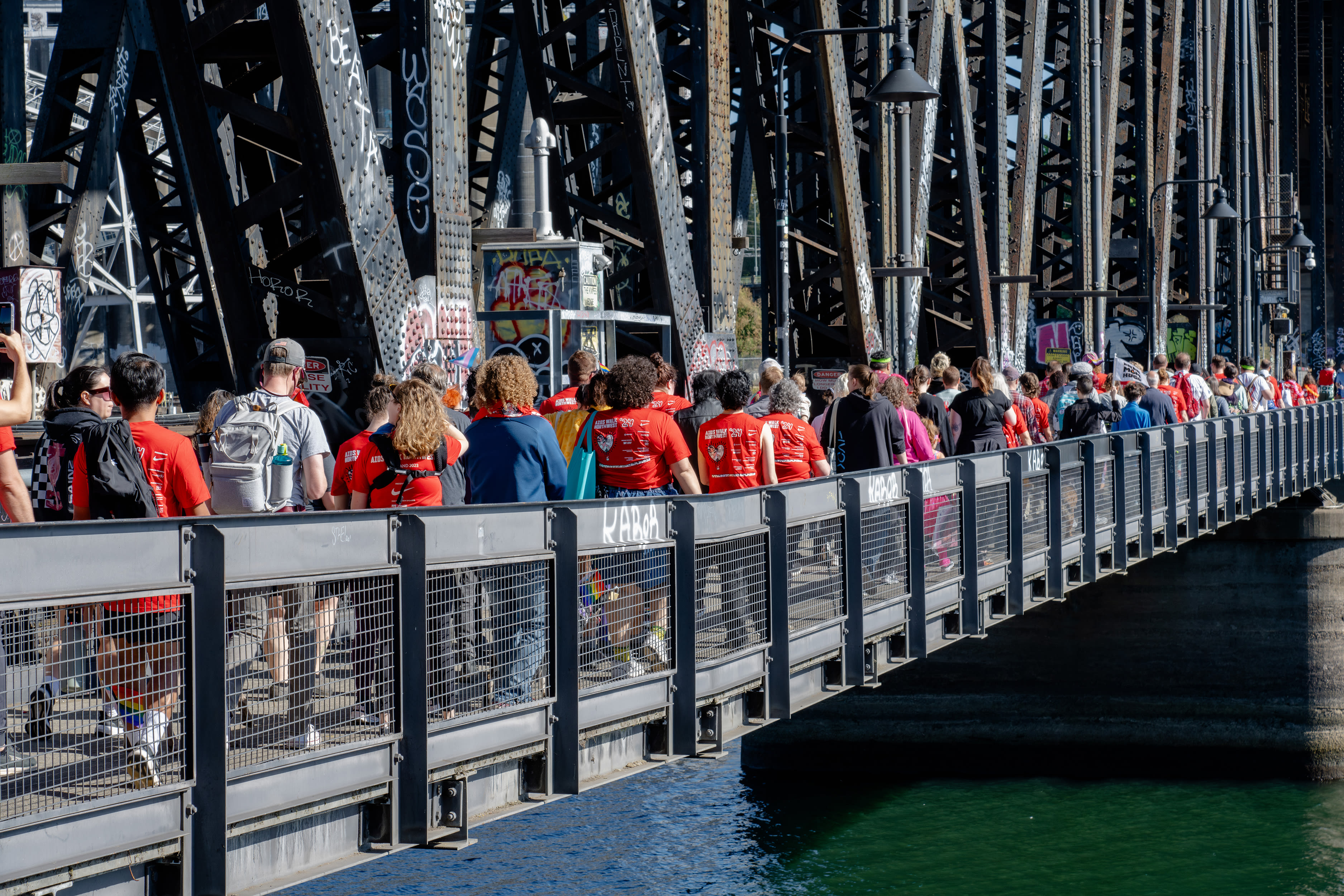A Life-Changing Alternative to Open-Heart Surgery
Frank Burns could no longer walk his beloved dogs along their favorite riverside trail. He couldn’t climb the stairs or perform simple tasks without experiencing shortness of breath and fatigue. He chalked it up to old age and put off seeing a doctor for as long as he could.
After several rounds of tests at Kaiser Permanente, the 65-year-old was diagnosed with what he calls “a laundry list of problems,” including aortic valve stenosis. This common but serious condition occurs when a narrowing of the aortic valve opening restricts blood flow from the left ventricle to the aorta.
Because of other health issues, however, Burns wasn’t a viable candidate for open-heart surgery to replace his worn-out valve. Dr. Abhimanyu Uberoi, structural heart medical director at Kaiser Permanente Northwest, offered him an alternative treatment called TAVR (transcatheter aortic valve replacement).
Less-Invasive, Faster Recovery
As with a growing number of heart procedures that are performed using a cath-based technique, Dr. Uberoi threaded a catheter—a tube with a small opening—through the patient’s leg into the heart, and positioned the new valve.
Cath-based procedures mean smaller scars, less risk of infection, and quicker recovery, compared with open-heart surgeries. Hospital stays following cath-based procedures are usually just one or two days compared to the week or longer that follow open-heart surgery.
“My life has gone from a slow degeneration toward certain death to a full life with my physical ability restored,” says Burns. “I feel 20 years younger.” He jogs a couple of miles each day, walks his dogs, does pushups, and has discovered a fondness for yoga.
Burns attributes his new lease on life to his sister, who recommended that he join Kaiser Permanente for excellent care and coverage. He’s also grateful to the team of doctors, nurses, and other professionals “who managed all my needs quickly, efficiently, professionally, and often with a smile.”

Frank Burns and Dr. Abhimanyu Uberoi of Kaiser Permanente
Image: Courtesy Kaiser Permanente
Innovation and New Technologies
Kaiser Permanente’s Center for Heart and Vascular Care was founded in 2009 and has grown into a regional leader and early adopter of cath-based heart procedures. To keep pace with these innovations, a state-of-the-art surgical room with advanced imaging capabilities has been added to Kaiser Permanente Sunnyside Medical Center, home to Oregon’s highest-rated heart program.*
Besides TAVR, the cardiac team at Kaiser Permanente is helping patients with heart conditions by using new technologies and less-invasive surgical techniques to close holes in hearts, remove blockages, and open arteries.
Mitral valve repair and atrial fibrillation are all in a day’s work for this team. But don’t think this A-team takes their role for granted. Dr. Uberoi is gratified when he sees patients who struggled to initially walk in the door emerge from cath-based, minimally invasive procedures transformed and thriving.
“If I can help people improve their quality of life and enjoy their time on this earth, then that’s what I want to do.”
Learn more about life-changing cardiac care at Kaiser Permanente at kp.org/cardiac/nw.




